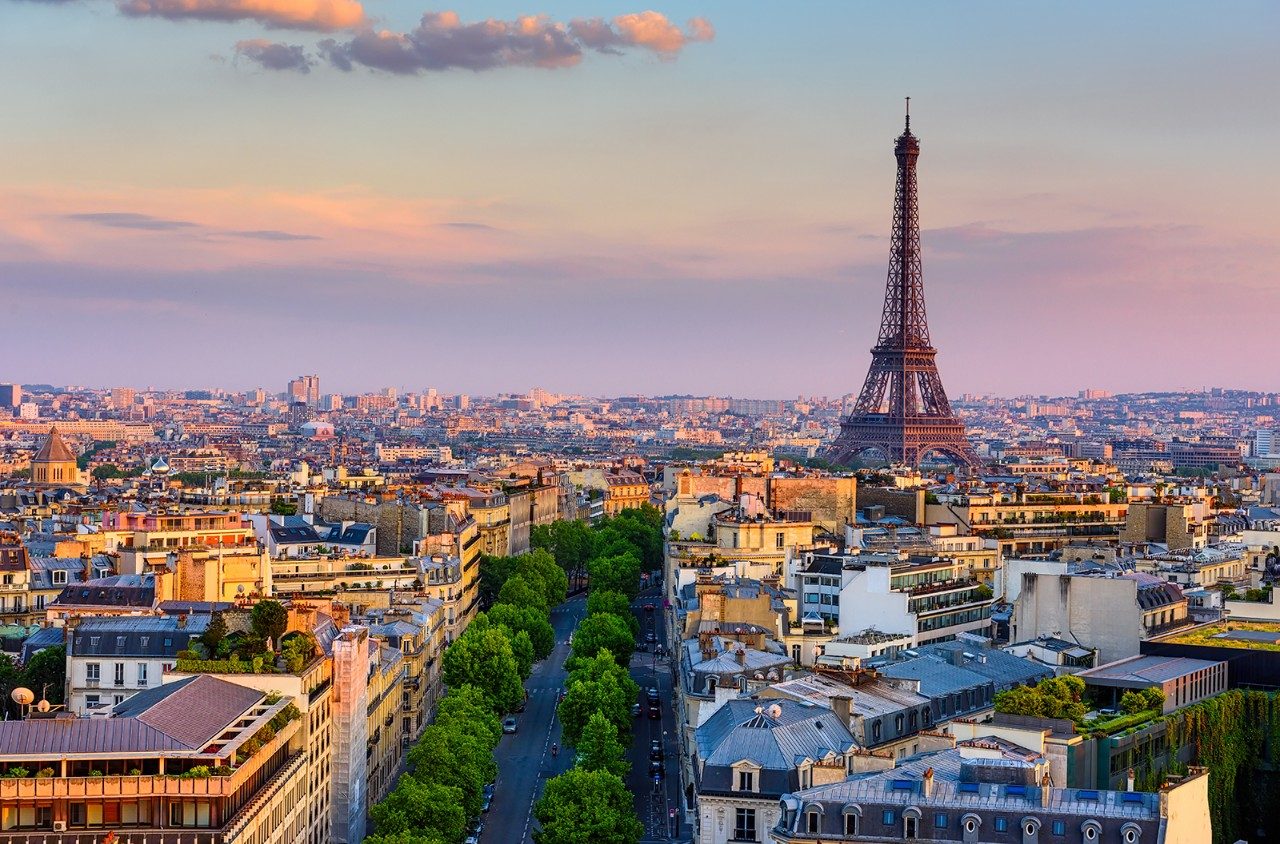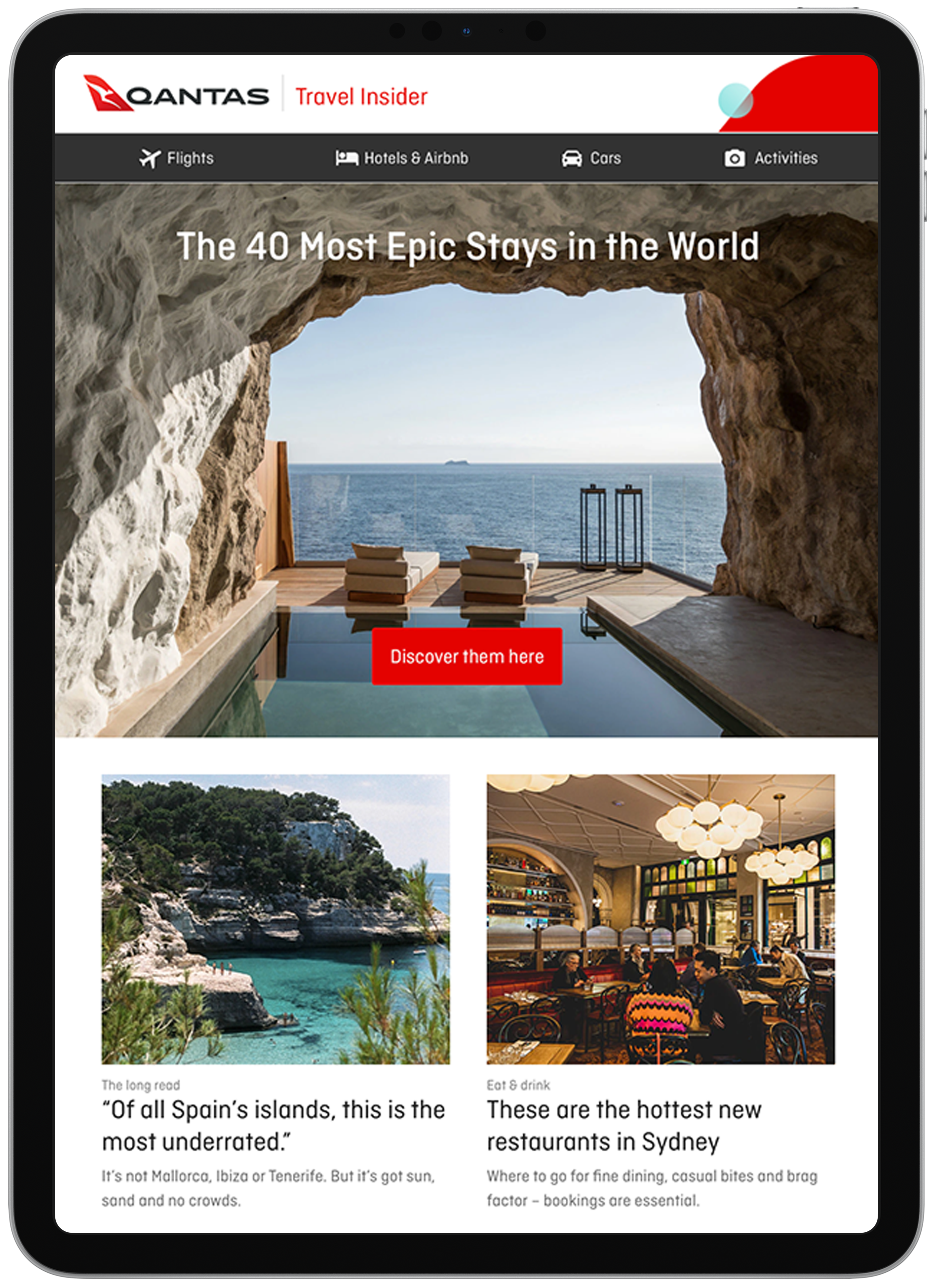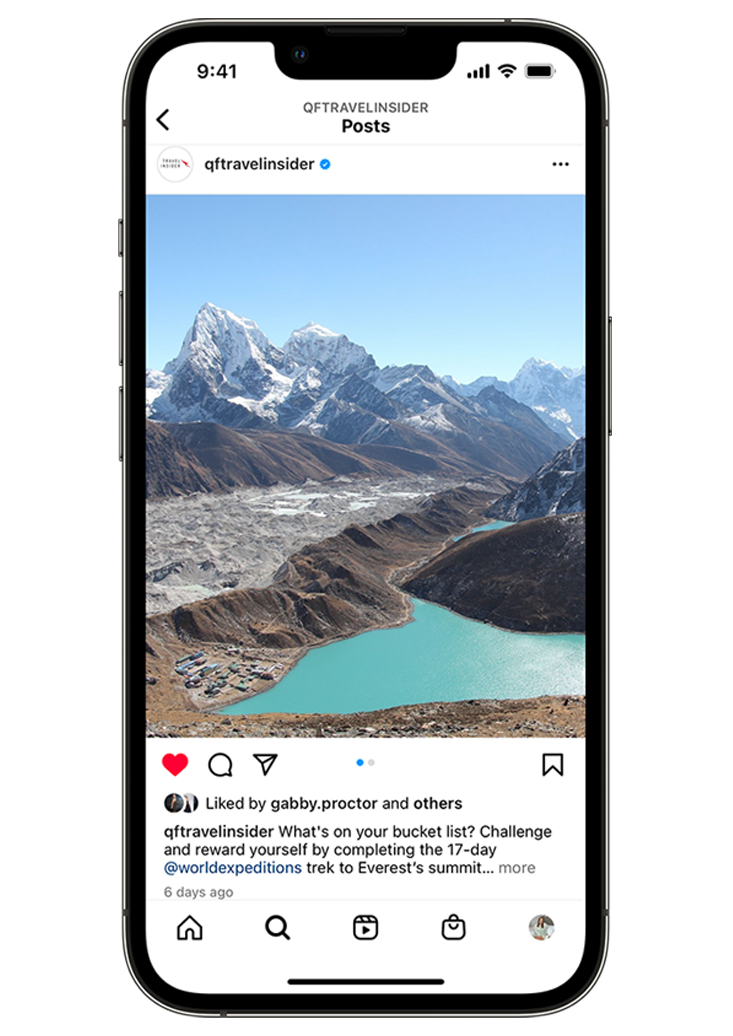Read Before You Leave – Paris

From the Haussmann buildings resplendent with wrought-iron window dressings that tower just a few levels above cobblestoned streets to the wide, tree-lined boulevards made for midnight strolls arm-in-arm with a lover – it’s so easy to get caught up in the romance of Paris. And that’s before you’ve stumbled across the bakeries overflowing with all manner of warm, fresh bread. You might just lose your head, so it pays to get the practical side of your visit – the train tickets, the accommodation, the key phrases – organised ahead of time. Then, once you hit the ground, all that’s left to do is create your own Paris, Je T’aime moments.
Flights
Qantas offers direct flights between Perth and Paris that take approximately 17 hours and 25 minutes.

Start planning now
Flying into Paris-Charles-de-Gaulle Airport (CDG) or Paris-Orly Airport (ORY)
Australia citizens travelling to France for a holiday and staying for less than 90 days don’t need to apply for a visa. Be sure to check Smart Traveller ahead of booking your trip as some European countries are set to change their visa and entry/exist requirements in 2025.
Always double-check whether your flight is landing at Charles-de-Gaulle or Orly as it will affect how you get to the city proper.
The train from CDG picks up passengers at each terminal and stops at Gare du Nord, in the 10th arrondissement, and Saint-Michel Notre-Dame, closer to the centre. The trip takes just over half an hour and costs around 13€ (A$21.70). Several buses also leave from each terminal and scatter new arrivals around the city; the journey takes between 50 and 75 minutes and will set you back between $10 and $26.
From ORY, catch the Orlyval train to Antony station, then change onto the RER-B train for Paris, which stops at multiple destinations. It will cost around 13.25€ (A$22.12) and take about 35 minutes.
Language
Make an effort to learn a few key French phrases. Even if your vocab stalled in high school and all you can manage is “bonjour”, say it! Follow up with “parlez-vous anglais?” and pepper your pleas for directions to the Louvre with a few “mercis”. Most people will be happy to help you on your way.
Where to stay

If it’s your first time to Paris and your main goal is to tick off the big bucket-list items (the Louvre, Notre Dame), then stay in the 1st arrondissement. Yes, you’ll pay a little more for the convenience of being within walking distance of museums and icons but this area is an ideal base if you’re short on time and big on experience. If you're seeking movie-worthy views of the ultimate Parisian icon, the Eiffel Tower, there are a number of beautiful boutique hotels in this central location worth considering.
Le Marais, which crosses the 3rd and 4th arrondissements, is central without being overrun by visitors; book an apartment or Airbnb during your time here to experience life like a local – and be sure to track down one of the widely lauded, enormous falafels from L’as du Fallafel.
Saint-Germain-de-Pres was once the haunt of Picasso, Hemingway and later Jean-Paul Sartre. While the classic Parisian atmosphere remains, elegant boutiques and fancy restaurants have mostly replaced its bohemian past. Instead, stay close to Canal St Martin, a hipster, working-class neighbourhood that’s ground zero for up-and-coming artists and a plethora of cool bars.
Etiquette
Rumour may have it that Parisians are rude to tourists, but if you neglect to greet your waiter, retail assistant or, really, anyone helping you out, the locals will likely think the same of you.
Not sure whether to turn your cheek for la bise on meeting a new acquaintance? Play it safe and partake in the custom if you’re greeting someone you’ve met before; otherwise, a handshake is acceptable. In Paris, an air kiss on each side is the norm (though in other parts of France, it can be a head-bobbing two-on-each-side).
Service charges are usually included in the bill at restaurants but for exceptional service, you can leave a 5 per cent tip or round up.
When to go

Opinion is divided. Some argue that summer is the peak time for Paris, when the weather is warm and the Paris-Plages – the artificial beaches that line the Seine between July and September – are there to lounge on. Others believe winter, when the Haussmann buildings receive a light dusting of snow and the lines to the key attractions are shorter, is far superior.
But many Parisians desert the sweltering streets for the coast’s cool breezes come the high temps of August, making any experience less than authentic; and the freezing night-time temperatures in winter aren’t conducive to a romantic stroll.
Arguably, spring is the best time to visit Paris. April is temperate and dry and the countless gardens and parks throughout the spring burst with coloured blooms, fewer people means a greater chance of nabbing a terrace seat to people-watch at a café and there’s a convivial atmosphere as the city thaws from the winter (literally, in the case of many public fountains).
Legalities
The Australian government’s Smart Traveller website recommends visitors familiarise themselves with the laws prior to travelling to avoid penalties.
It is illegal to conceal your face in public places throughout France, including with masks, motorcycle helmets or full veils.
Vaccine and health advice
Check with your doctor about vaccinations you might need before you fly.
There’s no reciprocal medical agreement between Australia and France and many hospitals require an upfront deposit and payment guarantee before patient admission.
A list of English-speaking doctors and dentists in Paris and surrounding areas is available on the Australian embassy website; many are at the the American Hospital, the Institut Franco-Britannique and the Hôpital Foch.
Call SOS Médecins France on +33 (0) 1 47 07 77 77 for urgent house calls or dial 15 for emergencies.
Transport tips
The Paris metro is impeccable: efficient, clean and safe. It stops running between about 1.15am and 5.30am on weekdays so if you’re planning a big night beneath the city’s sparkling lights, be sure there’s alternate transport for you to get home (the Noctilien night bus, for example, runs between 12:30am and 5:30am).
A Paris Visite pass is the simplest way to get around: select the ticket based on the duration of your stay (there are one-, two-, three- and five-day options available) and you'll have unlimited travel around the city and to the Île-de-France region (which includes Disneyland and the Palace of Versailles). Aussies can purchase a pass ahead of time here; a one-day pass is $50.
But one of the many joys of Paris is to wander the cobbled streets. Embrace the spirit of the flâneur – a person who strolls around with no purpose other than to people-watch – and you might stumble across a charming local café or a boulangerie selling the biggest baguettes you’ve ever seen.
Money matters
At the time of writing, the Australian dollar was buying 0.60 Euro – check a reliable currency conversion service for up-to-date information.
Visas and Mastercards are widely accepted, though some smaller shops and bars are cash only. Chip-and-pin cards are most common.
Weather wise

Paris has very distinct seasons, so you’ll need to carefully plan your packing list based on the time of year you’re visiting. In winter, it can drop to around 1°C and below zero overnight, with snow and frequent rain. In summer the mercury tends to average around 25°C, though the humidity in high summer can make it feel even warmer – and temperatures can climb above 30°C.
Visiting the Eiffel Tower
Pre-book a ticket to ascend (36.10€/A$60.26 with lift access all the way to the top) as the queues are notoriously long.
After that first obligatory visit head to the Arc de Triomphe or Sacré-Cœur. At these spots, you’ll see a cityscape from on-high that actually features the imposing structure.
Safety
Smart Traveller advises visitors to exercise a high degree of caution throughout all of France. Also, it’s worth being aware of pickpockets and scammers attempting to distract you around tourist attractions.
Tap water
The water in all of France is fine to drink. But why settle for boring still water when you could fill up your drink bottle with carbonated H20 at one of the fizzy fountains throughout the city? The first few were installed eight years ago but last year the project was expanded, with the goal of installing one sparkling-water fountain in every arrondissement. You can see a map of all the city’s drinking fountains here.
Dress code
Leave the thongs, shorts and sloppy tees at home – this is the chicest city in the world. While you won’t be nabbed for crimes against fashion, elevating your outfit will make it easier to blend in with locals and you’ll feel far more Parisian sipping an a glass of Bordeaux in a crisp white shirt than you will in a slogan t-shirt.
Go for classic, well-cut pieces (tailored pants, Breton shirts, trench coats) and a few choice accessories such as a coloured scarf or leather bag.
You’ll be doing a lot of walking in Paris so pick a shoe that’s comfortable but stylish – leave the joggers you go running in at home behind. Instead, choose a pair of sleek loafers, sneakers or boots.
Driving
Australians will need a valid Australian driver’s license and some car rental operators may require an international driver’s permit.
Insurance policy
Smart Traveller recommends all visitors take out comprehensive travel insurance to cover overseas medical costs, including medical evacuation.
Phone calls and mobile data
Before you land, disable data roaming and don’t answer incoming calls on your mobile phone if you want to keep your monthly bill in check. Invest in a prepaid travel SIM card if keeping in touch with home is important, or buy a prepaid French SIM card.
Phone home
To call Australia, dial +61 followed by the phone number – including the area code minus the zero. So, to call a Sydney landline telephone, you would dial +61 2 then the phone number. To call a mobile phone, use the same country code and dial the mobile number minus the first zero.
Gadgets
Power sockets in France use the same frequency and voltage as in Australia but you will need a plug adaptor in order to charge appliances and tech.
Handy apps and websites
- XE for up-to-date currency conversion.
- Travel Doctor for pre-travel health advice.
- Smart Traveller for up-to-date safety information.
- Australian Embassy Paris
- Paris Aéroport official app for up-to-date arrivals and departures.
SEE ALSO: The Best Things to Do in Paris For Free



